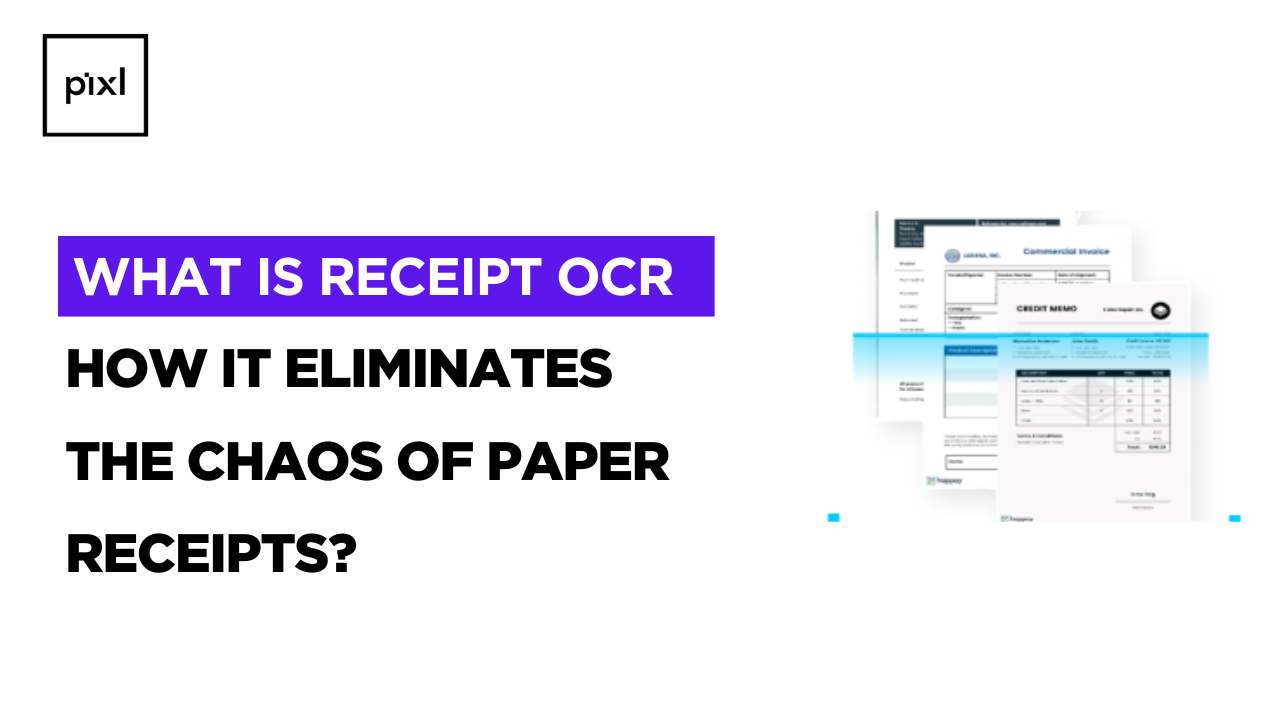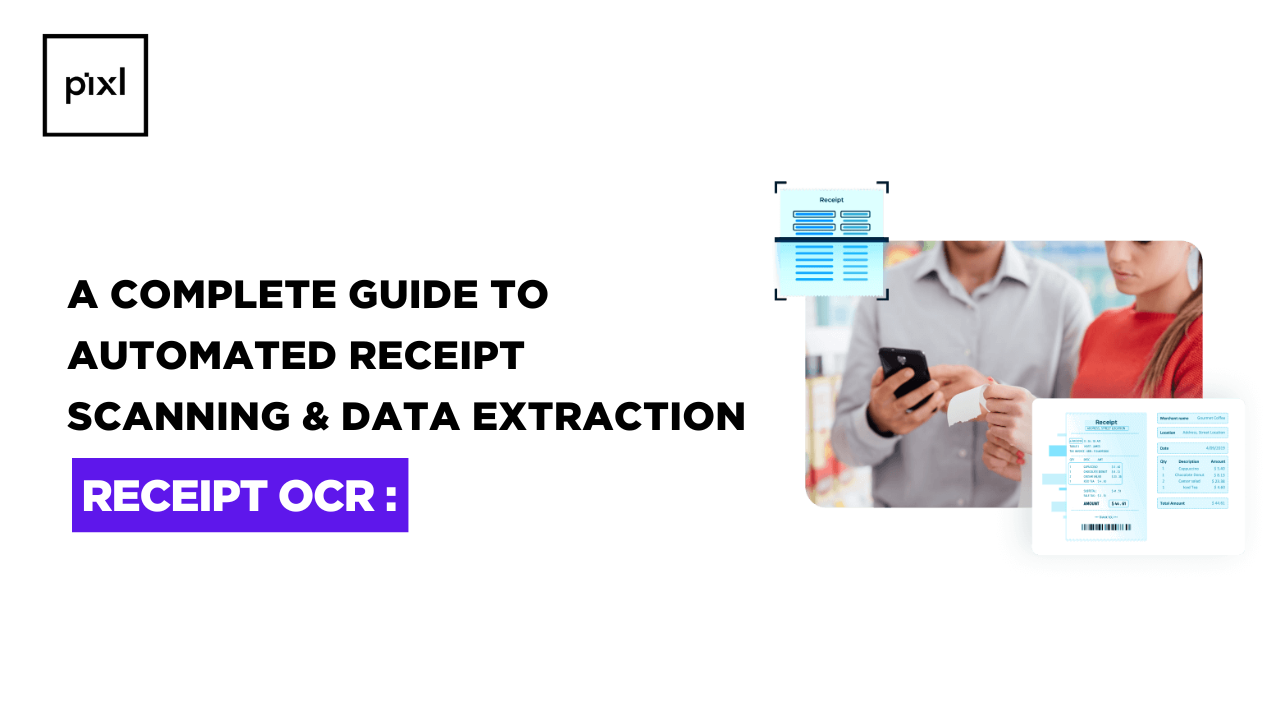In a world where every transaction, service, or purchase generates a receipt, businesses are sitting on a goldmine of data yet most of it remains trapped in paper slips, emails, and scanned images.That’s where Receipt OCR steps in.
Receipt OCR (Optical Character Recognition for receipts) automatically extracts information like merchant name, items purchased, taxes, totals, date, and payment mode from both digital and physical receipts. What once required hours of manual entry can now be completed in seconds.
This blog explores who uses Receipt OCR, what it is, when and where it matters most, why it’s valuable, and how it actually works, along with real industry use cases.
What is Receipt OCR?
Receipt OCR is an AI-powered technology that converts printed or digital receipt content into structured, machine-readable data. It recognizes:
- Merchant information
- Date & time
- Line items
- Taxes & Discounts
- Total amounts
- Payment methods
Advanced solutions go beyond basic text extraction and understand complex layouts, different languages, handwritten notes, and varied receipt formats.
Who Uses Receipt OCR?
Receipt OCR is used by:
- Financial institutions
- Retail & e-commerce companies
- Hospitality businesses
- Accounting & bookkeeping firms
- FMCG and market research companies
- Expense management platforms
- Insurance companies
- Logistics & transportation companies
- Gig platforms like food delivery or ride-hailing apps
Essentially, any business that collects or processes receipts benefits from OCR technology.
When Does Receipt OCR Matter Most?
Receipt OCR becomes essential when:
- Large volumes of receipts need daily processing
- Compliance and audit trails must be accurate
- Refunds or reimbursements depend on receipt validation
- Businesses need real-time visibility into spending
- Manual data entry slows down operations
- Digital transformation is a priority
Its impact is strongest during peak seasons sales cycles, tax periods, or year-end reconciliations.
Top 8 Use Cases of Receipt OCR Across Industries in 2026
Receipt OCR has grown from a simple text-extraction tool into an essential automation engine for modern businesses. By 2026, organisations across multiple sectors are using it to cut down manual work, boost accuracy, and unlock insights they couldn’t capture before. Here are the eight most impactful use cases shaping its adoption today:
1. Smarter Expense Management for Employees & Finance Teams
Instead of manually entering the receipt details or chasing up paper slips, employees now upload a quick photo through the app. OCR automatically reads the amount, merchant name, date, and category.This creates a smooth, error-free reimbursement workflow and saves finance teams countless hours.
2. Strengthened Compliance, Audits & Financial Matching
Banks, fintech companies, and accounting teams now depend on OCR to keep their records clean and audit-ready. Modern OCR systems can compare extracted receipt data with bank statements, internal ledgers, or card transactions reducing mismatches and simplifying audit checks.
3. Rapid Returns & Loyalty Rewards in Retail and E-Commerce
Retailers have transformed customer service by scanning receipts at return counters to instantly pull up purchase details.For loyalty programs, customers can upload their receipts from any store or website. OCR identifies qualifying items and updates their reward points automatically, making the process effortless.
4. Automated Restaurant, Supply & Guest Billing in Hospitality
Restaurants and cloud kitchens deal with the hundreds of supply receipts every week. OCR captures line items, quantities, and prices to update inventory and also purchasing systems without the manual entry. Hotels use OCR to bring together all guest expenses into one accurate digital bill, enhancing the checkout experience.
5. Verified Fuel, Toll & Maintenance Records in Logistics
Logistics and transport companies use OCR to validate driver receipts for fuel, tolls, repairs, and maintenance.This reduces fraud, ensures clean documentation, and simplifies reimbursements.
For freight operations, digitised receipts are attached directly to shipment records.
6. Faster Claim Settlement & Fraud Control in Insurance
Insurance companies rely on OCR to speed up the verification of travel, medical, and property claims.OCR flags duplicate receipts, signs of tampering, or suspicious expense patterns helping teams approve genuine claims faster while reducing fraud.
7. Actionable Consumer Insights for FMCG & Market Research
When consumers upload retail receipts during surveys or cashback campaigns, OCR extracts product-level details.This helps brands understand buying behaviour, track product performance, and measure campaign participation accurately all without manual coding of receipts.
8. Automated Reimbursements & Cost Intelligence for Gig Platforms
Delivery apps, ride-sharing platforms, and gig companies increasingly rely on OCR to manage fuel, parking, and order-related reimbursements for their workers.In 2026, many platforms also use OCR-generated data to analyse operational metrics like cost per delivery, route efficiency, and earning patterns supporting smarter decision-making.
Why is Receipt OCR Important?
Receipt OCR has become indispensable because it delivers:
✓ Faster Operations
Data that once took hours to enter is now captured in seconds.
✓ Higher Accuracy
AI reduces human errors and misread values.
✓ Reduced Costs
Less manual effort → smaller operational cost.
✓ Better Customer Experience
Faster refunds, reimbursements, and service delivery.
✓ Real-Time Insights
Businesses can analyze spending, fraud patterns, and purchase behavior instantly.
✓ Enhanced Compliance & Security
Digitized records ensure audit-readiness and safer data storage.
Benefits of Receipt OCR for Businesses
- Streamlined back-office operations
- Increased employee productivity
- Accurate bookkeeping & tax reporting
- Seamless integrations with CRM, ERP, and accounting tools
- Real-time business intelligence and dashboards
- Lower risks of fraud or duplicate receipts
It’s a win-win for both small businesses and large enterprises.
Future of Receipt OCR: AI, Machine Learning & Beyond
AI is redefining what Receipt OCR can do.
- Better understanding of handwritten receipts
- Automatic categorization of expenses
- Multi-language interpretation
- Real-time fraud detection
- Self-learning models that improve with more receipts
- Hyper-accurate line-item extraction
Businesses adopting OCR now will gain a competitive advantage as automation becomes the norm.
Conclusion
Receipt OCR is no longer a niche tool; it’s a cross-industry necessity reshaping the way businesses process, store, and analyze spending data.
From finance and retail to logistics, hospitality, and insurance, the technology brings unmatched accuracy, speed, and intelligence to daily operations.
Whether your goal is to eliminate manual data entry, enhance customer experience, improve compliance, or unlock real-time insights, Receipt OCR is the technology that makes it possible.


